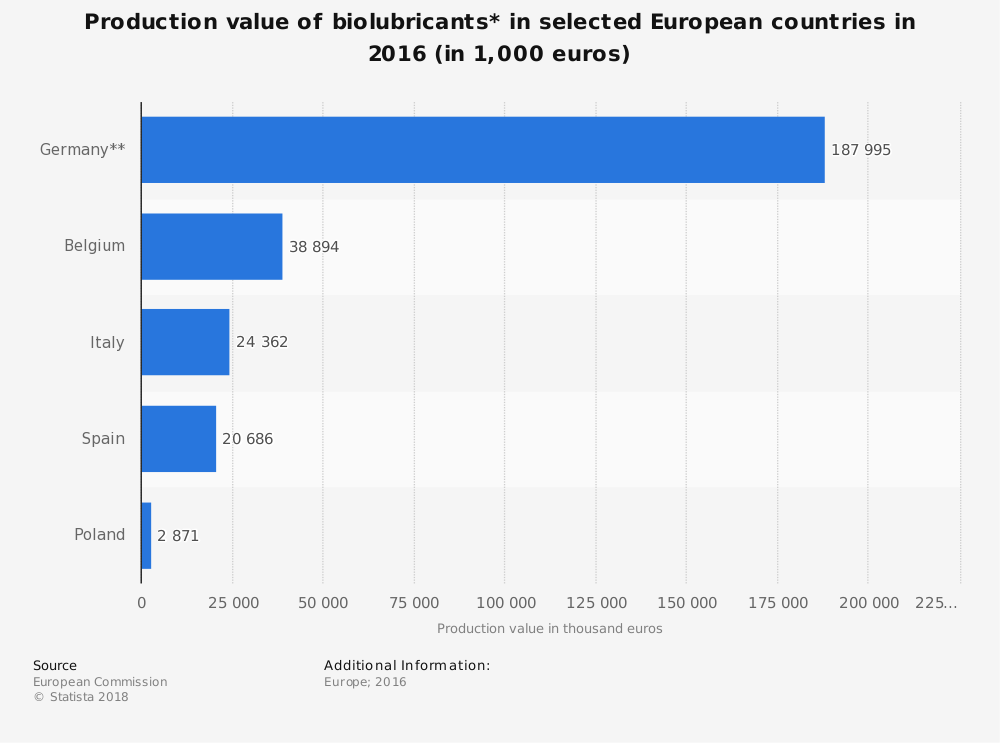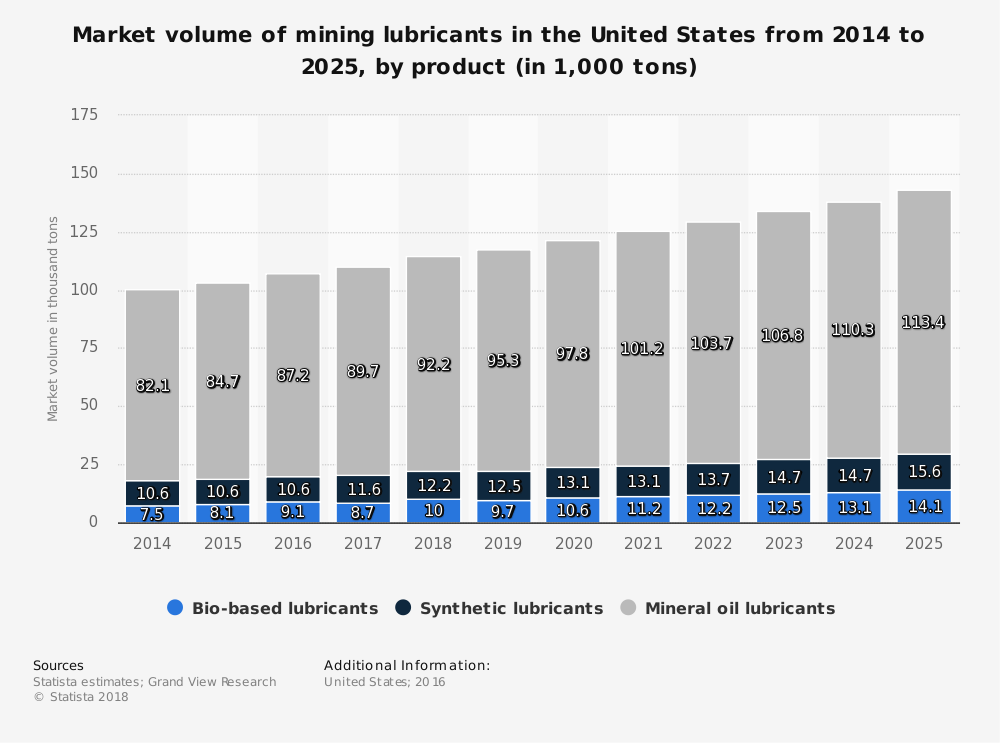BBI is an interesting combination of partners and providers. Participants include agencies within the forest sector, the chemicals sector, and technology providers. Agriculture and energy are also represented within the partnership.
The goal of BBI is to fund projects that will accomplish the mission and goals of the partnership. In doing do, technologies can be matured through research and innovation. Bio-based industries can be found all over the world as well.
Important Bio-based Industry Statistics
#1. The total value of the Bio-based Industries Consortium is EUR 3.7 billion. As of April 2018, there are 70 full industrial members and over 100 associate members within the partnership. (BBI-Europe)
#2. Bio-based products in the European Union represent about EUR 57 billion in annual revenues. They are also responsible for the direct employment of nearly 300,000 people. (BBI-Europe)

#3. The bio-economy is already worth an estimated EUR 2.2 trillion. In Europe, more than 18 million jobs are available because of what the bio-economy is able to provide. (BBI-Europe)
#4. 2.4 billion people use wood fuels to cook meals, sterilize their drinking water, or heat their homes. (U.N. Food and Agriculture Organization)
#5. When natural disasters happen, people depend upon the elements of the bio-economy to meet their basic needs. More than 65 million people in the last year depended upon fuel products from BBI resources to meet their basic needs. (U.N. Food and Agriculture Organization)
#6. Wood fuels provide about 40% of the world’s overall renewable energy supply. That’s as much as wind, solar, and hydroelectric power combined. (U.N. Food and Agriculture Organization)
#7. African households depend upon wood fuels more than any other continental demographic. This fuel source is used in 2 out of every 3 homes. (U.N. Food and Agriculture Organization)
#8. About 900 million people, with most employed in the developing world, have engaged employment because of the outreach efforts of the bio-based industries. (U.N. Food and Agriculture Organization)
#9. In the United States, the bio-based industry is responsible for a market that is $393 billion in size. More than 4.2 million direct employment opportunities are created because of the efforts of this industry. (Biofuels Magazine)
#10. For every direct employment opportunity created by the bio-based industries in the United States, another 2.86 indirect employment opportunities are created. Since 2013, the jobs multiplier of the industry has risen from 2.64:1 to 2.76:1. (Biofuels Magazine)

#11. California is the largest driver of bio-based products for the U.S. portion of the industry. In 201, the state offered more than $9.8 billion in added value. Georgia was second, with $8.2 billion in added value, while Texas was third, at $6.8 billion in added value. (Biofuels Magazine)
#12. More than 145,000 direct employment opportunities are available in California because of localized bio-based industries. North Carolina offers more than 90,000 direct opportunities, while Texas offers about 88,000 direct opportunities. (Biofuels Magazine)
#13. The top 10 states involved with the bio-based products industry in the U.S. each contribute $4.2 billion in added value, or more, annually. (Biofuels Magazine)
#14. Industry programs in the United States have designated 97 product categories, which represent over 14,000 products that are on the market today. (Biofuels Magazine)
#15. The U.S. bio-based industries help to displace about 6.8 million barrels of petroleum consumption per year. That equates to a reduction of 10 million metric tons of carbon dioxide being released into the atmosphere. (Biofuels Magazine)
#16. In the U.S., about two-thirds of the bio-based industry revenues are currently generated by the indirect opportunities that are created. That has limited growth to around 6.5%, which is better than the U.S. economy as a whole, lagging behind other developing bio-based economies.
#17. The majority of revenues generated by the European bio-based industries is derived from foods and food products, accounting for 44% of total revenues. In comparison, 5% comes from chemicals and plastics, with just 1% coming from biofuels. (Research Gate)
#18. Of the 18 million people employed in European bio-based industries, 57% of them are employed in the production of raw materials. Only 1% of workers are employed in chemical production. Just 0.2% of workers are employed in the biofuels segment. (Research Gate)
#19. In the U.S. bio-economy, $126 billion in direct sales by the industry generated another $126 billion of indirect sales, along with $117 billion of induced sales. (Golden, J.S., Handfield, R.B., Daystar, J. and, T.E. McConnell, 2015)
#20. More than 2,200 products have been certified to display the USDA Certified Biobased Product label in the United States. (Golden, J.S., Handfield, R.B., Daystar, J. and, T.E. McConnell, 2015)

#21. In FY 2013-2014, there were 20 agencies that developed bio-based purchasing strategies and targets. 15 of those agencies were able to meet or exceed their targets. 7 of those agencies were able to exceed the requested 90% rate of compliance. (Golden, J.S., Handfield, R.B., Daystar, J. and, T.E. McConnell, 2015)
Bio-based Industry Trends and Forecast
The BBI PPP in Europe is designed to be a development program to encourage more growth within the bio-economy. Over a 4-year period, a half-dozen successful start-ups have occurred because of this initiative, generating billions in revenues and providing jobs.
Although the bio-based industries in Europe have much more value than other regions, the rest of the world is beginning to catch up. In the next 5-year forecast, the U.S. market should meet, if not exceed, 50% of the market value of the European market. That would produce about 2 million more direct employment opportunities for American workers.
“Going green” has been a generational emphasis for many population groups. Their efforts at creating a bio-economy are becoming evident. Expect more products, more opportunities, and even bigger markets in the coming years.
Although millions of people visit Brandon's blog each month, his path to success was not easy. Go here to read his incredible story, "From Disabled and $500k in Debt to a Pro Blogger with 5 Million Monthly Visitors." If you want to send Brandon a quick message, then visit his contact page here.
